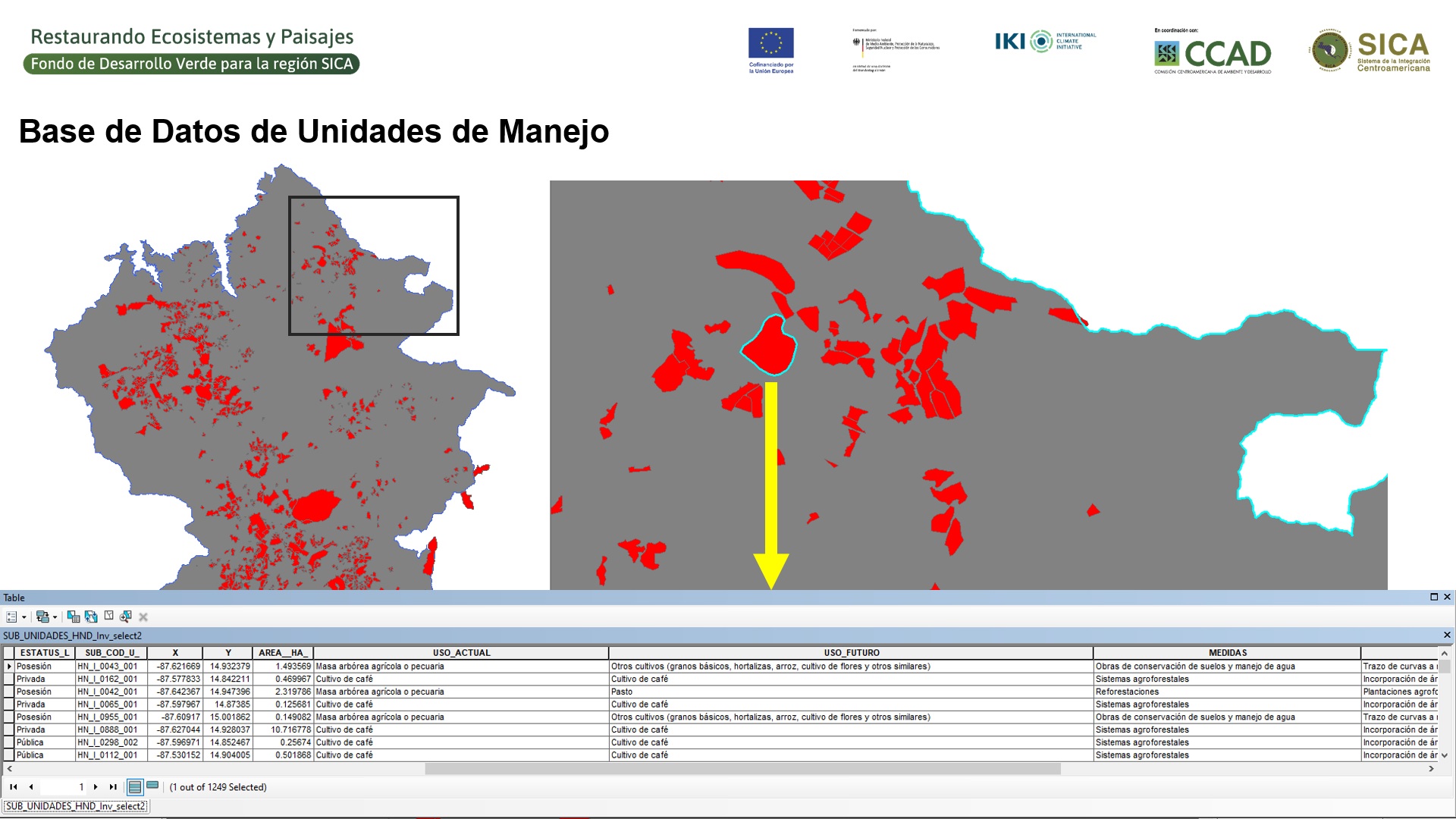Elaboration of a Database on Restoration Measures
Example of the Management Unit Database
GIZ
The objective of this building block is to provide developers and implementers of ecosystem and landscape restoration projects with a tool for collecting key information in the field to measure the impact of proposed restoration actions.
The steps for its implementation are:
- Survey of management units: provides complete information on the sites selected for restoration actions and includes; name and sex of the producer, correlative number and code of the management unit, administrative boundaries, geographic coordinates, area and legal status of the management unit, predominant land use and a photograph of the site.
- Survey of the management subunits: provides complete information on the specific restoration measures to be implemented in the selected sites and includes; the codes of the management subunits, coordinates and areas of the management subunits, current land use, future land use, restoration measures and practices to be implemented.
By executing this process, information is available that relates restoration actions to the improvement of ecosystem services in different parts of the landscape.
- Incorporate new technologies and work distribution schemes to make field data collection and processing cost-effective.
- Develop communication and performance protocols between office and field teams to collect quality data.
- Have a supervision scheme that provides timely feedback to data collection and processing, while avoiding reprocessing.
- The process of collecting management units is the most time-consuming part of this solution (estimated to be 2% of the project's execution cost), and therefore requires detailed and precise planning of the technologies to be used, the number of personnel required and the ways in which the data will be processed, as failure to do so in an appropriate manner may increase costs.
- To take care of the processing and quality of the data, cross supervisions (internal personnel of the organization that is not linked to the project) or outsourced (external personnel that have been hired for this purpose) are required, which can identify inconsistencies in the databases and what has been executed in the field.

